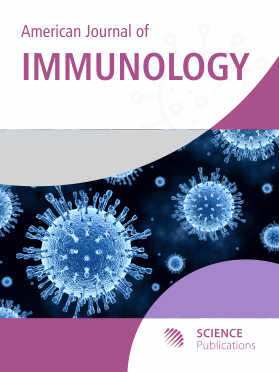THE IMMUNOMODULATORY EFFECTS OF PROBIOTIC BACTERIA ON PERIPHERAL BLOOD MONONUCLEAR CELLS (PBMCS) OF ALLERGIC PATIENTS
- 1 Zagazig University, Egypt
Abstract
Allergic diseases represent major health burden. An allergic reaction is characterized by a disrupted T- helper 1â„T-helper 2 balance toward a preferential allergen specifically induced TH2 cytokine profile, causing allergic inflammation Probiotic bacteria have various benificial effects in many pathologic situation. Studies have shown that the bacteria present in the intestinal micro flora play a role in the TH1/TH2 balance and its modulation can promote the control of infectious and immune processes. Testing the effects of probiotic bacteria on TH1/TH2 cytokine production by peripheral blood mononuclear cells of allergic patients and control subjects. This study included 24 patients allergic to date pollen and 16 healthy control subjects. PBMC of both groups were separated and cultured for 72 h with date pollen allergen (home-made) in the presence or absence of Lactobacillus rhamnosus ATCC 7469 (Living and dead) and C- phycocyanin (extracted from Spirulina platensis). The cell culture supernatants were collected to measure Interlukin 4 and Interferon gamma by quantitative ELISA. Incubation of PBMCs of allergic patients with living Lactobacillus rhamnosus ATCC 7469 showed marked reduction in IL4 production (median IL4 concentarion = 3.9 pg.) compared to PBMCs callenged with pollen alone (mediam IL4 conentration = 52.6 pg). When PBMC were incubated with living Lactobacillus rhamnosus in absence of allergen significant increase in and IFNγ (median concentration = 42.75 pg.) was obtained, compared to PBMC challenged with allergen alone (median = 22.8 pg). When PBMCs incubated with heat killed Lactobacillus rhamnosus either in presence or absence of the offending allergen, marked reduction in IL4 production was obtained (median = 10.6, 3.6 pg respectively) compared to PBMC incubated with allergen alone (median = 52.6 pg). When PBMCs incubated with dead Lactobacillus rhamnosus, marked increase in IFNγ production was obtained (median = 49 pg) when compared to IFNγ production by PBMC challenged with allergen (median 22.8 pg). PBMCs challenged with PC in the presence or absence of allergen showed marked decrease of IL4 production (median = 19.8, 17 pg respectively) when compared to PBMC incubated with the offending allergen alone (median = 52.6 pg). PBMCs incubated with PC showed significant increase of and IFNγ production (median= 319.6 pg) when compared to PBMC incubated with the offending allergen alone (median = 22.8 pg). Conclusion Lactobacillus rhamnosus ATCC 7469 and C-phycocyanin (extracted from Spirulina platensis) inversed the TH1: TH2 polarization in allergic patients and could be a promissing line of treatmen.
DOI: https://doi.org/10.3844/ajisp.2014.116.130

- 4,587 Views
- 2,841 Downloads
- 28 Citations
Download
Keywords
- TH: T Helper Cells
- PC: Phycocyanin
- IL 4: Interlukine 4
- IFNγ: Interferon Gamma
- PBMCs: Peripheral Blood Mononuclear Cells
